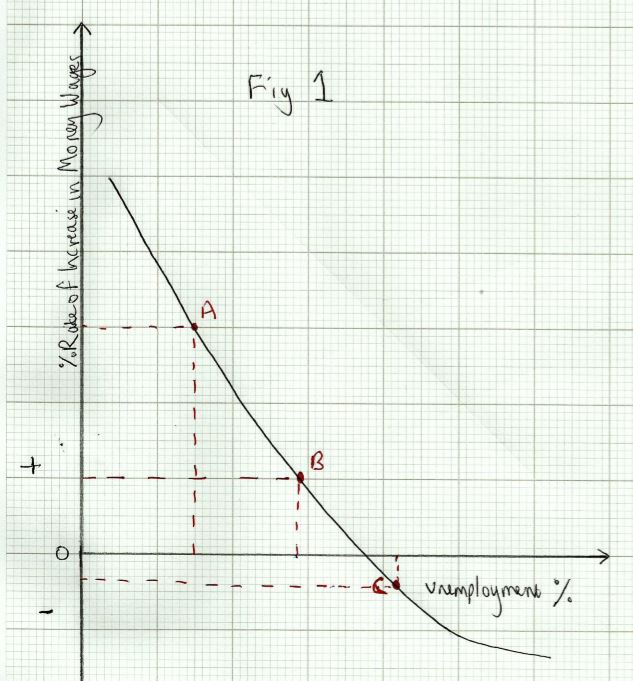Conflicts and Trade-Offs Between Objectives and Policies
Potential Conflicts and Trade-Offs Between the Macroeconomic Objectives
The following conflicts may arise between objectives:
Low inflation – Reducing the rate of inflation can be achieved by reducing AD, but this is likely to conflict with keeping unemployment at a low level and maintaining economic growth. Reducing AD may push the economy into recession.
Increasing growth – If the growth rate is too low (perhaps below trend), it can be raised in the short term by increasing AD. But this may lead to higher inflation and a worsening balance of payments, as higher spending sucks in more imports. Long term growth may be improved through supply-side measures, but these carry the risk of increasing inequality (i.e. by cutting benefits or taxes on high incomes. There is also the risk that faster growth may be achieved at the cost of environmental objectives.
Reducing unemployment – Cyclical unemployment can be reduced by increasing AD, but again, this carries the risk of higher inflation and a worsening balance of payments. Other kinds of unemployment, such as frictional, seasonal or structural may be addressed through supply side policies, but again these carry the risk of widening inequality.
Improving the government’s finances – If the budget deficit and/or the national debt are considered to be too high, the government can raise taxes and/or reduce public spending. This would reduce AD, resulting in a lower equilibrium output, so unemployment ma rise and growth fall.
Improving the current account of the balance of payments – A large or chronic deficit can be corrected by a reduction in AD. Tax increases for instance would reduce consumption and so imports would fall. But lower AD might cause the growth rate to slow and unemployment to rise as domestic output falls.
Improving the environment – Measures to improve or protect the environment may involve a trade-off with economic growth, at least in the short to medium term. For instance, carbon taxes raise the cost of production for goods and services and may discourage investment. Planning restrictions may impede the construction of factories or airports. It could be argued however, that environmental measures may stimulate the growth of industries involved in ‘clean technologies’, such as solar power and wind farms and electric vehicles.
Reducing inequalities of wealth and income – Some measures to reduce inequality, such as raising taxes for higher earners, or increasing out of work benefits might reduce incentives to work and therefore affect economic growth adversely. But other measures, such as improving housing, healthcare and education might reduce inequality and increase growth, since healthy, educated and well housed workers are likely to be more productive.
The Short Run Phillips Curve
The economist A.W Phillips discovered a strong statistical correlation for a number of countries between the rate of unemployment and the rate of growth of money wages (and hence the rate of inflation, which is closely linked with growth in wages).
This relationship can be shown in a Phillips curve diagram, as shown in _Fig 1 _below:
The Phillips curve shows a trade-off between unemployment and money wages (and hence inflation). Unemployment can be brought down, (by expanding AD), but will result in higher inflation, and vice versa.
A move from point__ A__ to point__ B__ brings lower inflation but higher unemployment. A further move to point C results in negative inflation (prices falling rather than just rising more slowly) and a further rise in unemployment.
Phillips concluded that governments have a dilemma; to choose between keeping inflation low or unemployment low.
Neo-classical economists accept that there can be a short-term trade off between inflation and unemployment, but argue that in the long term, the LRAS is vertical at full employment. They see the trade-off as temporary. The economy will return to full employment anyway, without an increase in AD. The long run effect of the increase in AD will simply be higher prices (higher inflation).
Potential Policy Conflicts and Trade-Offs
Because macroeconomic objectives can conflict with each other, it follows that the policies used to pursue those objectives can also be conflicting, either with objectives or other policies. For example:
Fiscal Policy – If there is concern over the size of the budget deficit or national debt, the government may reduce spending and raise taxes. Portugal, Ireland, Greece and Spain (collectively known as ‘the PIGS’, were obliged to undergo a massive dose of deficit reduction, known as ‘austerity’ after the financial crisis, as a pre-condition for loans from the EU and International Monetary Fund. This caused very big falls in output, increases in unemployment and widening inequality. An expansionary fiscal policy may reduce unemployment and raise growth in the short term, but result in higher inflation and a worsening balance of payments. It may also add to the national debt if higher government spending or lower taxes results in a budget deficit.
Monetary policy – An expansionary monetary policy can increase short term growth and reduce unemployment, as AD increases, but may lead to faster inflation and a deterioration in the balance of payments. Contractionary monetary policy will have the opposite effect.
Supply-side policies – This may raise the potential output of the economy and increase the long term growth rate. But some supply-side policies increase inequality (i.e. cuts in benefits or tax cuts for high earners and company profits). Policies to boost investment may also cause higher inflation in the short run as investment spending is part of AD.
Environmental policies – As discussed above, measures to improve or protect the environment may involve a trade-off with economic growth, at least in the short to medium term. For instance, carbon taxes raise the cost of production for goods and services and may discourage investment. Planning restrictions may impede the construction of factories or airports. It could be argued however, that environmental measures may stimulate the growth of industries involved in ‘clean technologies’, such as solar power and wind farms and electric vehicles.


